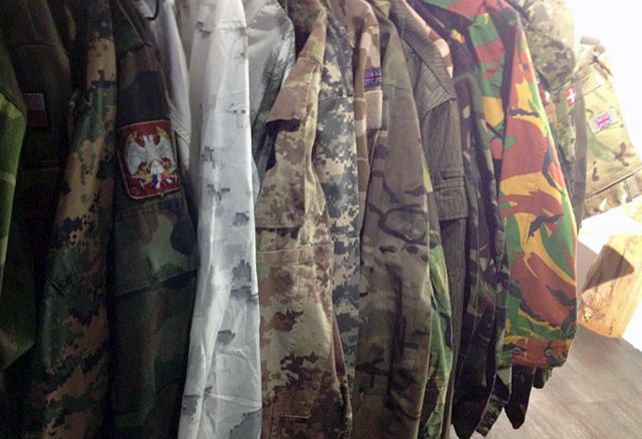A duel between being seen and unseen
Camouflage is a rapidly-growing research field. FOI is developing modern methods for measuring detectability and is performing computer simulations and studying techniques for material development.

Low signature against the background. The FOI trailer that was placed behind Linköping University in connection with a demonstration of measurement technology had a low signature. Photo: FOI.
The threat of new types of weapons systems equipped with advanced sensors is growing. Small unmanned aerial vehicles are a case in point. Their proximity, angle of view, and detection technologies create new challenges. An example is new sensors that can detect radiation not normally visible to the human eye or other characteristics of light, such as polarisation.
“There is interest in using this sensor technology in military contexts. This means that the duel is underway, that we need protection against this form of reconnaissance. Maybe the answer is a little white beetle whose back shield has the ability to reflect different wavelengths and polarisations of light in an interesting way,” says Hans Kariis, deputy research director, in Linköping. He is co-author of the report, Signaturematerial 2014-16 [trans: Signature Materials 2014-16] and is involved in among other things a new EU project, called ACAMSII (see info box).
Camouflage is also called signature management. A car, a person, or any other object, has a certain signature, a set of characteristic features that distinguish it from its surroundings. The corvette HMS Visby is an example of a ship with a low signature, the result of its colouring, geometry, and construction.
“FOI works with signature management in a range of different fields. This involves signature analysis, where we measure an object’s signature, for example an FMV procurement process where the supplier has specified that an object has a certain degree of signature,” says Hans Kariis.
Imitates nature
FOI is also working with computer-simulated signature management and tests prototypes digitally. This may also deal with simulating different types of material.
FOI is also studying a spectrum of different technologies for improving material, colouring, and geometric design. The activities can be divided into static camouflage and dynamic camouflage. The challenges in the first group entail working with new materials that imitate nature, so-called biomimetics, of which the polarised beetle is an example. Pigments, photonic crystals, and functional textiles are a few others.
“Dynamic camouflage comprises material that adapts itself to the surroundings. This is an entirely new research field. This area works with material that for example changes colour in response to heat and electricity, or surfaces that can quickly change thermal radiation,” says Hans Kariis.
He points out that signature management can also deal with the opposite: the desire to be visible.
“There are many situations where one wants to develop inexpensive decoys, for example inflatable vehicles with simple thermal radiation that simulates exhaust emissions.”

Structured colours. They appear often in nature. They create the colours in peacock feathers, many butterflies, and beetles. These structures interact with wavelengths of light and inspire camouflage research. Photo: FOI

Military camouflage patterns come in many variations. These are examples from a private collection. New patterns are continually developed. Photo: FOI.

Adaptive camouflage. Beneath the surface, much can be hidden. Some research projects derive inspiration for the adaptive camouflage of the future from octopuses and elsewhere in the marine world. Photo: FOI.

HMS Karlstad, one of five Visby corvettes. The corvette HMS Visby is an example of a ship with a low signature, resulting from colouration, geometry, and construction. Photo: Jimmie Adamsson/Armed Forces.
